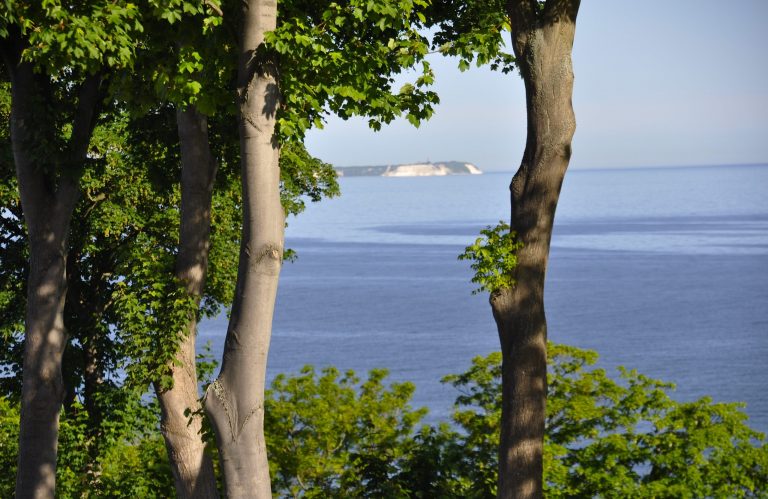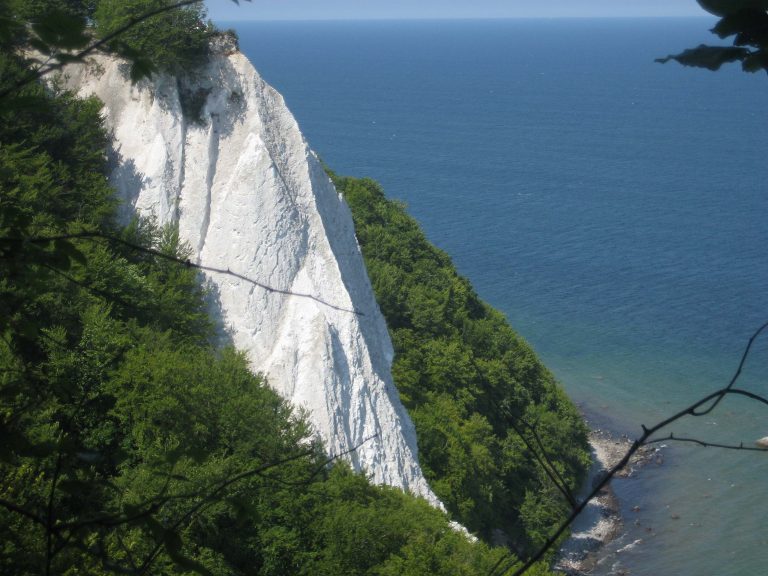Hiking in the national park
The whole of Rügen is a region that offers special hiking experiences. In Lohme they start right outside the door – in the Jasmund National Park. The forest area of the Stubnitz on Jasmund has been under nature protection since 1929, the Jasmund National Park was founded soon after reunification and has been a UNESCO World Heritage Site since 2011. The previously cultivated forest with its moors and the enchanted Hertha Lake should continue to grow wild, becoming a kind of primeval forest. Fallen giant trees remain where they are, and hiking trails are rarely repaired. Clever hikers therefore never set off without sturdy hiking boots – and not in strong winds, because then branches often fall.
One of the most beautiful hiking trails begins right behind the Panorama Hotel: It leads along the high bank over streams, stones and roots through the protected beech forest to the highest chalk cliff in the Stubbenkammer, the Königsstuhl. In the visitor center of the national park you can find out everything you want to know about the formation of the Baltic Sea and the island of Rügen.
When in May the anemones spread a carpet of white blossoms across the forest floor, when the sound of the Baltic Sea waves mixes with the gentle rustling of the freshly green treetops, you can really feel the soul of this place. Along the forest path known as „Moonlight Allee“ below Lohme, young men in love have been scratching testimonies of their love with their knives into the tree bark for two centuries. However, these young men were often soldiers of the GDR border troops on patoullie and therefore alone with their longing, the tree and their knife.
The myth of the chalk cliffs
Who does not know the painting „Chalk Cliffs on Rügen“ by Caspar David Friedrich. The great Greifswalder established the romantic fascination for the white natural monuments in the northeast of the island. The Königsstuhl, this 119 meter high majestic landmark of the island of Rügen, is just under 4 kilometers from Lohme.
Experienced hikers can manage this route in 45 minutes, but who wants to rush? The views of the turquoise-green sea are far too beautiful for that. Nevertheless, be careful! No matter how tempting it is to look down: stay on the paths and don’t step on the unsecured steep bank! Even hiking on the stone beach, where the flints lie, is never entirely without danger.
Another tip: Europe’s only chalk museum in nearby Gummanz shows very clearly what great economic importance the mining of the „white gold“ had on Jasmund until a few decades ago.












